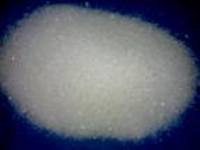SODIUM CHLORIDE
PDV SALT
Technical & Cosmetic Grade
Glacia Standard
A Pure Dried Vacuum Salt.
PDV Salt stands for Pure Dried Vacuum Salt — a high-purity, fine-grained sodium chloride (NaCl) produced by vacuum evaporation of brine. It is >99.9% pure, clean, and free-flowing. It has a bulk density of between 1.22 and 1.32 gcm-3. Pure dried vacuum salt is suitable for a wide range of general applications including chemical, industrial and water treatment where quality and purity are paramount. Commonly used in textile & dye manufacture, Shampoo & detergent manufacture
Specification:
- Chemical Name: Sodium Chloride
- Synonyms: Halite
- Formula: NaCl
- CAS Number: 7647–14–5
- EINECS Number: 231–598–3
- Appearance : Crystalline solid
- Colour : White / Colourless
- pH : 10.0 approx. (10% solution)
- Boiling Point : 1413oC
- Melting Point : 802oC
- Flammability : Non-flammable
- Flash Point : Non-flammable
- Explosive Properties : Non-flammable
- Oxidising Properties : Non-flammable
- Vapour Pressure : 2.4mm Hg at 747oC
- Density : 2.165 g cm-3 (of crystalline solid at 20oC)
- Water Solubility : 35.9 g/100g at 0oC 39.2 g/100g at 100oC
A typical sieve analysis is as follows:
- 100% passes through 1400 micron sieve.
- max. 8% retained on 850 micron sieve.
- max. 56% retained on 425 micron sieve.
- max. 91% retained on 300 micron sieve.
Industrial & Agricultural Uses
-
Chemical manufacture: Feedstock for chlorine, caustic soda, sodium-based chemicals
-
Textiles & dyeing: Fixing agent in reactive dye baths (see below)
-
Soap and detergent production: Filler and viscosity modifier
-
Water softening & regeneration: In granulated or briquetted form
-
Oil drilling fluids: Controls density and stabilises formations
- Preservative for silage and hay
Health & Safety:
Under the Classification, Packaging and Labelling of Dangerous Substances Regulations, 1984, this material is not dangerous for supply or conveyance.
PLEASE NOTE: This product is not for human consumption and is not to be used in food processing.
Role of PDV Salt in Reactive Dyeing
Key Function: Promotes Dye Exhaustion
-
PDV salt reduces the solubility of reactive dyes in water.
-
This forces the dye to leave the solution and migrate onto the fibre.
-
The salt neutralises the negative charge on the cotton surface and on the dye molecules, allowing the dye to come into close contact with the fibre.
How It Works — Step-by-Step
-
Start of dye bath:
-
Fibre (e.g., cotton) is suspended in a bath with reactive dye + water.
-
Dye molecules and fibre both carry negative charges, so they repel each other.
-
-
Salt addition (e.g., PDV salt):
-
The salt (NaCl) releases Na⁺ ions into solution.
-
Na⁺ ions screen or neutralise the fibre's negative charge, allowing dye molecules to approach the fibre.
-
-
Dye exhaustion:
-
The dye now moves from the water phase to the fibre surface.
-
Once there, dye reacts with the fibre (with alkali assistance in the next step).
-
-
Alkali addition (e.g., soda ash):
-
After dye exhaustion, an alkali is added to initiate the covalent bonding between dye and fibre.
-
Why Use PDV Salt Specifically?
| Property | Benefit |
|---|---|
| High purity (~99.9%) | No contaminants to interfere with dyeing |
| Fine crystals | Dissolves quickly and evenly |
| Food/pharma grade | Ensures quality control and safety |
Typical Usage Rates
| Dye Depth | PDV Salt Dosage (g/L) |
|---|---|
| Pale shades | 20–40 g/L |
| Medium shades | 40–60 g/L |
| Dark shades | 60–100 g/L |
-
Added in stages to avoid sudden changes in dye bath concentration.
-
Dosage also depends on dye class (monochlorotriazine, vinyl sulfone, etc.)
Example Recipe: Reactive Dye Bath for Cotton
| Ingredient | Amount (per litre) |
|---|---|
| Reactive dye | 1–4% owf (on weight of fabric) |
| PDV Salt (NaCl) | 40–80 g/L |
| Soda ash (Na₂CO₃) | 10–20 g/L |
| Temperature | 40–60 °C |
| Time | 45–60 minutes |
Summary
PDV salt in reactive dyeing:
-
Promotes exhaustion, not chemical fixation
-
Helps dye migrate to fibre
-
Works best when followed by alkali addition for bonding
-
Chosen for its purity, flowability, and fast dissolution
